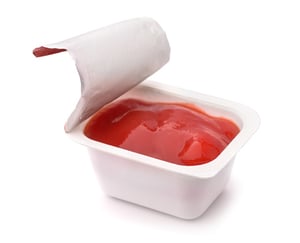 For food manufacturers, barrier packaging is essential to preserving product quality, maintaining safety standards, and extending shelf life. A critical element of this system is seal integrity, which depends on a secure bond between the rigid barrier container and the flexible lidding film. This seal must protect the product during distribution, resist contamination, and offer easy access for the end user.
For food manufacturers, barrier packaging is essential to preserving product quality, maintaining safety standards, and extending shelf life. A critical element of this system is seal integrity, which depends on a secure bond between the rigid barrier container and the flexible lidding film. This seal must protect the product during distribution, resist contamination, and offer easy access for the end user.
Achieving this balance is technically demanding. Factors such as flange contamination, inconsistent sealing parameters, or incompatible materials can compromise seal performance. At the same time, manufacturers must ensure the lidding film remains peelable at the point of use, which presents its own set of challenges.
Barrier Packaging Requirements: Shelf Life and Material Compatibility
Regardless of the material or method used to produce the package, distribution of the final shelf-stable food product will require the package to be sealed with a lidding film.
There are a number of key factors that need to be considered for barrier packaging driven by the target shelf-life of the product based on the OTR (Oxygen Transmission Rate) and MVTR (Moisture Vapor Transmission Rate) of both the barrier rigid structure and lidding film.
Selecting the right lidding material involves aligning three core criteria:
- Sealing integrity
- Barrier characteristics
- Processing compatibility
The barrier properties of the lidding film must be compatible with the overall packaging structure to prevent spoilage, preserve taste and texture, and comply with safety regulations.
Lidding Film Options and Sealant Layer Considerations
 A wide variety of lidding solutions are available today for both barrier and non-barrier form fill seal and thermoformed container applications that range from die-cut foil lidstock to multi-layer and metalized films.
A wide variety of lidding solutions are available today for both barrier and non-barrier form fill seal and thermoformed container applications that range from die-cut foil lidstock to multi-layer and metalized films.
When specifying materials, engineers must consider:
- The sealant layer on the rigid rollstock
- The compatibility of the lidding film’s sealant layer
- Target seal performance specifications
Material compatibility between the rigid rollstock and the lidding film is especially critical to achieving a reliable, consistent seal. Depending on the required barrier properties and desired peel strength, each layer must be carefully selected and matched. Custom-engineered sealing systems can be developed for both components, particularly when working with common food-grade substrates such as polypropylene (PP), polystyrene (PS), or polyethylene (PE). This allows manufacturers to tailor seal characteristics — such as strength, resealability, and peel force — to the specific demands of the application.
Peelability vs. Permanent Seals: Application-Specific Design
In extended shelf-life form fill seal food packaging, the seal must hold throughout storage and distribution, yet still peel cleanly when opened by the consumer.
For applications using polypropylene as the food contact surface, several high-performance sealant options can improve the peel behavior of lidding films.
In order to draw a comparison all you need to do is peel the lid-stock from various single-serve polypropylene container applications such as shelf-stable applesauce or pet food containers to feel the difference.
There are two primary seal types:
- Easy-Peel Seals: Designed for convenience, these open smoothly and require minimal force, ideal for ready-to-eat applications.
- Weld Seals (Lock-Tight): Offer tamper evidence and maximum seal strength, but cannot be resealed once opened.
The appropriate seal type depends on the product's end-use environment and market positioning — whether the priority is ease of access or enhanced protection.
Physical and Functional Properties of Lidding Films
In addition to seal performance, lidding films must meet multiple critical physical and functional requirements to ensure packaging effectiveness across applications. These attributes directly impact the film’s compatibility with specific food products, processing environments, and consumer expectations.
Key lidding film characteristics include:
- Clarity – for product visibility and consumer appeal
- Thickness – influences strength, barrier performance, and machinability
- Color and composition – affects branding, opacity, and recyclability
- Food compatibility – ensures safety and regulatory compliance
- Heat and chemical resistance – critical for processing conditions such as retort or sterilization
- Sustainability – supports environmental goals through recyclability or bio-based materials
Evaluating these variables during film selection helps ensure the packaging solution meets both technical specifications and market requirements.
Get the Full Guide to Barrier Packaging Solutions
Ready to explore material choices, sealing techniques, and performance comparisons in more depth? This comprehensive whitepaper covers everything from substrate compatibility to peel force optimization, helping you make more informed packaging decisions:




